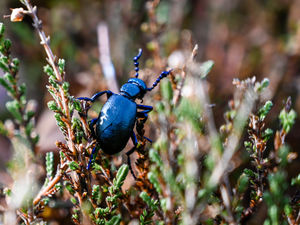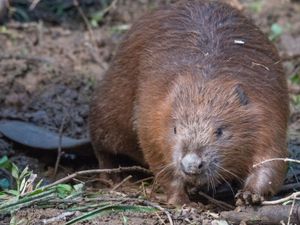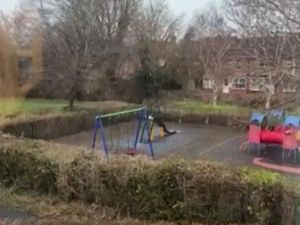Rare insect population soaring at National Trust conservation site near Stourbridge
The population of a rare species of insect is continuing to grow at a National Trust conservation site near Stourbridge.

This spring, sightings of black oil beetle have increased at Kinver Edge in South Staffordshire, where a diverse landscape of rare, lowland heath is managed to support nature and wildlife.
Heathland is characterised by wide, open landscape, dominated by scattered trees and low-growing shrubs, such as gorse, heather and grasses.
Sandy soils provide ideal habitats for lots of invertebrates, including the black oil beetle.
As one of the UK’s rarest habitats, heathland needs to be managed and maintained.
National Trust rangers at Kinver Edge care for the heath by cutting vegetation and grazing livestock to control invasive plants.
Without these interventions, the landscape quickly becomes over-taken by bracken, scrub or woodland, and this rare habitat, which supports lots of wildlife, is lost.
National Trust countryside manager Ewan Chapman said: “I’m so pleased to see that these beetles are colonising more and more areas on the Edge.
"Last year, we spotted them for the first time in an area of restored heathland.
"This spring, they’ve spread throughout the landscape to make their home in areas of bare earth, which our team of rangers and volunteers create as part of their on-going management of this special habitat.
“The beetle burrows into the sandy soil, which is a key characteristic of heathland habitats, to create their nest.
"Whilst the population growth of this insect is a good indicator that our work to restore and manage the heath on Kinver Edge is paying off, there isn’t time to sit back and rest on our laurels.
"Our work to manage this special habitat, restore areas of former heathland and protect its rare and resident wildlife, continues at pace.”
Andy Perry, National Trust conservation advisor said: “Oil beetles are great indicators of good quality habitat; for part of their life cycle they are dependent on ground nesting solitary bees which feed on wildflowers.
“They have become rarer in the wider countryside as key habitats such as heathland and wildflower meadows have been lost. The fact that the number of these rare beetles is rising, and they’re colonising more areas at Kinver, is testimony to the quality of habitat and health of wild bees at the site.”
As part of ‘Sandscapes’, a National Trust-led nature recovery project which aims to restore heathland habitats across Shropshire, Staffordshire and Worcestershire, work to save this important habitat and the species that call it home is under way at Kinver Edge.
James Lawrence, Sandscapes project manager said: “Heathland, once a widespread and common component of the landscape in the Midlands, is now isolated and fragmented.
"More than 80 per cent of this rare and special habitat has been lost in the last 200 years, through agricultural change, conifer planting, development pressures and neglect.
"Wildlife that rely on this type of habitat, including many insects, reptiles and ground nesting birds, are endangered or under threat of extinction.”
The National Trust’s plans to restore Blakeshall Common at Kinver Edge as an area of traditional lowland heath will help to support the growth and reestablishment of rare species at Kinver, including the black oil beetle.
The gains for many species of wildlife of restoring the heathland will be significant, particularly for those that are increasingly rare in the UK.
Currently a conifer plantation, this area offers an opportunity to deliver a restoration project that will not only provide a home for wildlife, but also ensure that it can continue to be accessed and enjoyed for recreational purposes.





